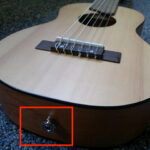For guitarists, achieving the perfect sound is a never-ending quest. A crucial component in this journey is the guitar pickup. Whether you wield an electric, acoustic, bass, or even a 12-string guitar, the right pickup can dramatically elevate your instrument’s voice. Guitar pickups translate the strings’ vibrations into electrical signals, which are then amplified to produce the sound you hear. Understanding the different types of guitar pickups available is essential for shaping your desired tone.
Exploring the World of Guitar Pickup Designs
Guitar pickups are not created equal; they come in various designs, each offering unique sonic characteristics. Two primary categories stand out: magnetic pickups and microphone pickups. Within magnetic pickups, you’ll find single-coil and double-coil (humbucker) configurations.
Single-coil pickups are renowned for their bright, clear, and articulate tone. They excel at delivering a punchy sound that cuts through a mix, making them popular for genres like country, blues, and rock. However, single-coils are also susceptible to hum and noise, particularly at higher volumes.
Double-coil or humbucker pickups were invented to combat the noise issues inherent in single-coil designs. By using two coils wired in a specific way, humbuckers effectively cancel out unwanted noise while producing a thicker, warmer, and more powerful sound. Humbuckers are favored for genres like rock, hard rock, and metal due to their fat mid-range and enhanced bass response, providing a richer and more sustained tone.
Piezoelectric pickups operate on a different principle. Instead of magnets, they utilize crystals that generate an electrical signal when mechanically stressed by the guitar’s vibrations. Piezo pickups are predominantly used for acoustic guitars as they are designed to capture and amplify the instrument’s natural acoustic sound. They are also effective at minimizing feedback, a common problem when amplifying acoustic instruments.
Often, guitar manufacturers and players combine different pickup types to harness the advantages of each. Hybrid systems can offer a broader tonal palette and greater versatility.
Notable Guitar Pickup Examples
To illustrate the impact of different pickup designs, let’s consider a few well-regarded examples in the market.
For acoustic guitars seeking a natural and nuanced amplified sound, the LR Baggs Anthem Tru-Mic Acoustic Microphone/Piezo Pickup System stands out. This system ingeniously blends a bridge plate mounted microphone with an undersaddle piezo pickup. This combination captures both the body resonance and string articulation of the acoustic guitar, resulting in a warm, detailed, and authentic amplified tone. The microphone element adds air and realism, while the piezo ensures solid low-end and feedback resistance.
For electric guitarists pursuing a classic rock tone with warmth and sustain, the Seymour Duncan APH-2s Alnico II Pro Slash Humbucker Electric Guitar Pickup set is a popular choice. Famously used by Slash of Guns N’ Roses for decades, these humbuckers deliver a warm, vintage-voiced sound with a full low-end and smooth sustain. The Alnico 2 magnets contribute to a softer, more rounded tone, ideal for bluesy leads and classic rock rhythms.
Another compelling option for electric guitarists is the EMG DG20 David Gilmour Pre-Wired Pickguard/Pickup Set. Favored by David Gilmour of Pink Floyd, this set features EMG’s active single-coil pickups with Alnico magnets. Active pickups are known for their high output, low noise, and consistent tone. The Alnico magnets in the DG20 set provide a full, round tone with an emphasized mid-range, suitable for a wide range of styles from clean and articulate to overdriven and powerful.
Optimizing Your Sound with Pickup Placement and Combinations
The placement of guitar pickups significantly impacts the resulting tone. Pickups positioned closer to the guitar’s neck typically produce a warmer, rounder, and bassier sound due to the greater string vibration amplitude in that area. Conversely, bridge pickups, located closer to the bridge, tend to be brighter, thinner, and have more attack, as the string vibration is less pronounced.
Many guitars feature multiple pickups, allowing players to blend the tones of different pickups. Using a combination of neck and bridge pickups unlocks a wider spectrum of sonic possibilities, offering versatility for various musical styles and playing techniques. Experimenting with different pickup combinations and placements is crucial in tailoring your guitar’s sound to your preferences.
Conclusion: Guitar Pickups as Essential Tone Tools
Guitar pickups are far more than just simple accessories; they are fundamental components that shape the very essence of your guitar’s sound. By understanding the different types of pickups and their sonic characteristics, guitarists can make informed decisions to enhance their instrument’s tone and achieve their desired musical expression. Whether you are seeking sparkling cleans, warm vintage tones, or high-output power, exploring the world of guitar pickups is an essential step in maximizing your guitar’s sonic potential.

